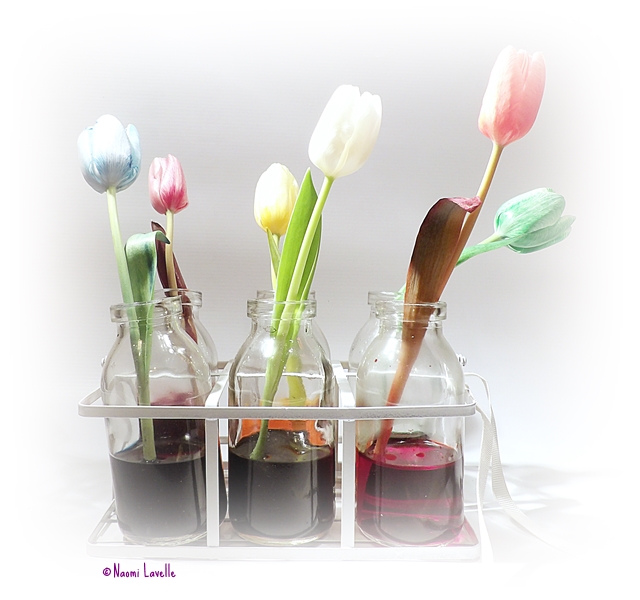It is National Breast Feeding Week (1st to 7th October) and I am delighted to be part of a Blog March organised by the Irish Parenting Blogger Group. I think I am the last in the march…. sneaking in at the end as we cross the finish line! However there have been a number of great posts written during the week… the does and don’ts, the dream verses reality and a lot of great tips and advice. The links to all these blogs are at the end of this post… along with a great competition to win some breast pumps. If you want any more information on breast feeding you can check out www.breastfeeding.ie.
The theme for this year is “every feed counts” and this really rings true for me. For my contribution I share a little bit of the science behind breast feeding along with a bit of the reality… my reality at least!
A bit of the Science
Benefits to baby
- Breast milk fulfills all the nutritional needs of the baby and changes to accommodate the child as it grows
- As well as nutritional benefit, breast feeding has an emotional element to it, naturally soothing and comfort an upset baby
- Breast milk can provide antibodies to combat everyday colds and viruses as they occur, it is not just a food but a meidicine!
- The mood and environmental stresses of the mother can directly effect the temperament of the baby, scientists are realising that this can even shape the child’s personality.
- Research studies link breast feeding with a reduced risk of heart disease later in life
- Some research studies suggest breast fed children have a reduced risk of getting type I and type II diabetes
- and then there is Colostrum….
Colostrum is nature’s super food, produced by all mammals for their newborn infants. It is packed full of essential vitamins and minerals, vital growth factors, antibodies to boost the immune system and high levels of protein to satisfy the small digestive system of the baby. Colostrum is a thick yellowy liquid produced in the mammary glad during pregnancy and provides the newborn digestive system with just what it needs.
The benefits of colostrum are immense… it provides the newborn with a natural defense (passive immunity) against many viruses and bacteria until the infant’s own immune system strengthens. It helps line the baby’s digestive tract with beneficial bacteria and the fine tuned maintenance of these bacteria is carried on by breast milk, changing daily to keep these gut flora happy!
Colostrum also acts as a mild laxative, helping the baby pass its first stool (meconium).
 |
| photo credit: fikirbaz via photopin cc |
Benefits to Mum
There are many reports suggesting the health benefits to the mother when she breast feeds her baby for prolonged periods (usually more than six months). These benefits are constantly being reported and refined and include…
- a decreased risk in getting breast, ovarian or unterine cancer
- a decreased risk in getting Alzheimer’s disease
Alongside these health benefits is the fact that the sucking of your infant stimulates the release of the hormone oxytocin from the pituitary gland. Oxytocin stimulates milk production or “let down”, encourages uterine contraction and produces that “feel good factor” that can be crucial to the bonding of mother and baby.
A bit of the reality (my reality)
When my first child was born I was ecstatic, thrilled, besotted…. and completely naive! Having never even changed a nappy I couldn’t believe I was suddenly responsible for such a tiny little being, but one thing I was sure of was that I would breast feed. I mean I literally had a PhD in milk genetics… if I knew the science behind it then the application must be the easy part…. right? WRONG!
I can’t even say I had a problem with producing colostrum or my milk coming in on time or any of those other issues that women can struggle with; I just had no idea of the basic things like the time it takes, the worries, the uncertainties and the pain….. Oh the PAIN!
I consider myself to have a fairly high pain threshold, I had managed to get through labour without much of a murmur, I had even slipped the baby out without the need for pain relief. But nothing prepared me for the pain I felt through my body after a few days of feeding this beautiful, innocent looking infant. It was just impossible to relax as I put those little rosebud lips to my poor, cracked, aching nipples! Once she latched on I would literally pound the floor with my feet until the pain levels subsided to something akin to bearable! How could something so natural be so damn sore?
I think it was worse for my loved ones looking on. My mother is a gem, she did everything she could to support me but, having never breast fed herself, she felt helpless when it cane to giving me more advice or guidance on the subject. My poor hubby felt it too, it was more than he could bear to watch my toe-curling antics and there were plenty of times he said “enough” and scooped baby off towards the kitchen and the back up formula only to relent to my sobbing and our agreement to try “just one more“! And that is how we got through it…. one feed at a time until gradually the pain eased, the tears subsided and mother, father and child realised that we may actually get through this and life may be OK!
It was stubbornness, team work and time that got us through… but let me be clear, after about a week we added a bottle of formula into the equation too! I think it was one a day, it didn’t stop the crying of mother or child but it probably helped us all get through it. We kept that up until my daughter was about ten weeks old and I had relaxed enough, learned enough and grown in confidence enough to be able to get through without the bottle.
Baby number two
Less than two years later baby number two arrived on the scene. I was equally as ecstatic, thrilled, besotted… but not nearly as naive. As soon as my son was born he latched straight on to the boob and that was that for 15 months! Yes there was pain but not as much as before and knowing what to do and that it was short term made it a lot easier. I did try to introduce a bottle to him after six months but this guy would rather die of starvation/dehydration that drink from it! I was VERY lucky at the time that I was not under pressure to return to a job so the two of us got on with what worked best and kept with the breast until he decided he was done!
Baby number three
Skip ahead another three years and baby number three arrives on the scene. Again he stole my heart the moment I laid eyes on him and he latched on straight away. I was a dab hand at this …. what could possibly go wrong??? A lot it seems! I had never suffered with mastitis before but all that changed! Within a month I had three rounds of it, I had spent most of my time since his birth on antibiotics and our little family was coping as best we could. I remember sitting on the couch on Halloween night, shivering with a temperature of 41oC trying to avoid a trip to A & E. In the midst of medication, aching boobs and thermometers the kids were still trick or treating at the door and we were trying to keep it as fun as possible for our other two children. We somehow managed to get through that night but enough was enough. I was sent off to a breast specialist and for an ultrasound on both breasts. Nobody could find the reason for the mastitis but the advice from all the medics was unanimous… it was time to stop breast feeding. I cried and cried and cried but I knew that this time it was the right thing to do! My husband couldn’t keep taking time of work, my other two kids needed me and I was ultimately spending less time with my baby as I had to sleep off the infection between feeds. I had made it to six weeks and every one of those feeds counted but it was time for the bottle!
Do I regret it or feel like I missed out or that my son did? Not at all actually! I felt I bonded with him in other ways. The bottle feeding allowed me give time to my other children too and allowed my hubby some feeding time with his baby son. My son grew up happy, loved and healthy. I am really glad that I got to feed him for a while but the bottle feeding brought a lot of positive things to our family too.
My bit of advice?
There is a lot of great advice out there for people who are considering/trying breast feeding. There are also plenty of support groups (a lot more than when I first started off). My honest response to looking for advice is to be careful. I found the more people I asked, the more I undermined my own confidence. We all need support and we all need to ask our questions but if you ask too many different people you will get a lot of different opinions and it is a confusing enough time as it is. When seeking advice, choose wisely and be aware that some people look back with rose tinted glasses! Some people may want to tell you how well it went for them and how their baby was sleeping through the night blah-de-blah. These people I found did the most damage to my weak and feeble confidence. It was only years later that I found out that one such person forgot to mention the bottle of formula they fed every night before bed! Without this bit of vital information I was left thinking there was something wrong with me, my milk, my child!
The best advice I ever got was from a Mum who said “nobody knows your baby better than you, just trust your own instincts and you will be fine!”…. and from that moment on, I was!
So in my opinion… does every feed count? Yes! Absolutely! To manage just one feed, one day, one month is wonderful but as I found out, every baby, every situation is different and ultimately it is all down to choosing what is best for you and for baby!
- Listen (again) from Awfully Chipper
- Every Breastfeed Makes a Difference: This Mama’s Contribution to National Breastfeeding Week from The Busy Mama’s
- Blog March for National Breasfeeding Week from Mama.ie
- National Breastfeeding Week and NUK Breast Pump Giveaway from My Internal World
- Blog March for National Breastfeeding Week (and a giveaway) from The Nest
- Breastfeeding Week from The Dare Project
- Why I didn’t breastfeed (Part 1) from Looking for Blue Sky
- Thoughts on the Stigma from Debalicious
- Tongue Tie Fail from Office Mum
- Every Feed Counts from Bumbles of Rice
- Are you Breastfeeding? from In the Kids Room
- A Good Start in Life from Dairy Free Kids
- Mini tales of woe and wonder from Mini and Me
- It’s National Breast Feeding Week and Every Feed Counts plus a Giveaway from Learner Mama
















.jpg)

